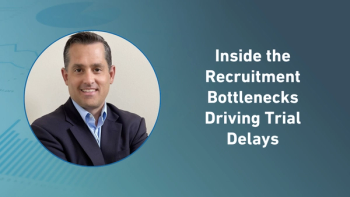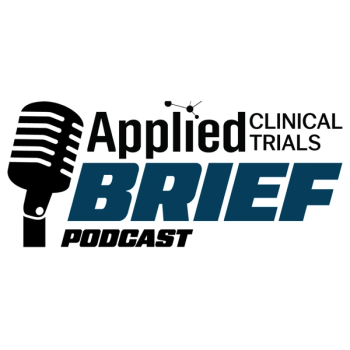
eClinical Technology Considerations for Cell and Gene Therapy Studies: Case Study Snapshots of Personalized Medicine
With the world of gene therapy still rapidly evolving, an Interactive Response Technology system might help a sponsor navigate new and complex steps throughout the supply chain.
Cell and gene therapy is a growing experimental technique that uses cells, proteins or genes from a patient or donor to treat or prevent disease. Cells are harvested and sent to a lab, which grows and develops these molecules into a personalized treatment for individual patients. A kit containing the altered cells - often in a bottle - is then returned to the drug depot, and sent to the site to be dispensed to the patient.
The hope is that eventually physicians will be able to treat a range of diseases including hereditary, heart and renal diseases, AIDS, and cancer; by infusing a gene into a patient's cells, as an alternative to medication based on small molecules, biologics, or surgery.
Bringing expertise to a new and complex clinical landscape
The logistical considerations for cell and gene therapy studies are very different from traditional clinical studies. One of the most important considerations focuses on managing samples. At the patient’s visit, there is still a kit or a treatment to be administered. Everything that happens before the treatment visits adds complexity: creation of the treatment, accurately tracking its progress and location, and the associated numbers. Tracking the process of that therapy from inception through dispensing, these numbers include a sample identifier, a manufacturing number, a lot number, and a release number - all of which are unique to a patient. Managing these extra steps in the supply chain are critical to the smooth operation of the study and regulatory compliance.
An IRT (Interactive Response Technology) system can help a sponsor effectively navigate these new and complex steps throughout the supply chain. When a cell and gene therapy patient receives a specific therapy developed just for them, an IRT platform can adapt to allow for the unique processes for each cell therapy treatment.
Sponsors in the vanguard of cell and gene therapy research
Cenduit’s clients are researching a number of gene therapy treatments. To illustrate, consider the example of the numerous steps involved in tracking an apheresis collection bag. Until the point at which it becomes the actual IP, steps include...
- Pre-assigning a certain number of apheresis collection bags at random
- Creating an apheresis form in the IRT system in which bags are assigned individually
- Capturing the date of collection, volume, etc.
- Marking a bag as not used, used (and assigning a new IP number at the time of manufacture), damaged/lost, or shipped to the manufacturer
- Tracking the bag shipment
- Treating the creation of a bag of IP as a new drug, and conducting a “release,” complete with individual expiry
We have also worked with sponsors on studies in which the cell therapy treatment was handled similarly to a traditional drug trial in terms of dispensation. The client harvested stem cells collected from various donors, and stored and distributed the newly-created therapy to multiple patients, similar to a traditional drug.
A consultative approach
Working in cell and gene therapy requires a more consultative and flexible approach from IRT and eClinical solution providers. Sponsors have varying degrees of experience running cell and gene therapy trials. We recommend assigning Project Managers (PMs) based on the sponsor’s needs and level of complexity of the therapeutic area and indication. For sponsors who need extra support, a PM can provide a deeper level of consultation to help them navigate through the IRT build process. This type of sponsor can include high-tech startups and emerging biopharmas (EBPs) that have not delved into the details and logistics of how cell and gene therapy studies can be managed and how IRT design can be used to optimize this process.
Handling unusual requests in cell and gene therapy trials
In reality, there are numerous ways in which sponsors should conduct cell and gene therapy trials, and then there are ways in which they wantto conduct them. Keeping in mind that cell and gene therapy trials are already among the most complicated therapeutic areas, it is an eClinical technology provider’s job to identify viable solutions, while staying firmly within the parameters of good clinical practice, regulatory compliance and patient safety.
A gene therapy trial snapshot
A client asked Cenduit to utilize an academic medical facility as a secondary depot, with the idea that someone would drive the treatment to the administering doctor’s office. Working with the client closely, we helped to re-strategize the following…
- The treatment bag was stored in liquid nitrogen (pre-use status), thawed and prepared by a secondary depot (ready to use status), and then sent to the site just in time for patient infusion
- As soon as the treatment was thawed and prepared, an expiry date was dynamically created for each kit/treatment
- All status and associated information was tracked,as well asthe object’s physical location. Shipment status was used for tracking (in process, in transit, received).
- In addition to tracking the location and use of medication, we tracked the lifecycle of each treatment in this complex study.
The world of gene therapy is still rapidly evolving. Sponsors are working diligently to learn how they can use best practices in trials to improve healthcare from the youngest to the eldest patient, across a wide range of indications.
Dan Pavitt is the Associate Director of Business Solutions, and Kevin Pounds is a System Design Project Manager both of
Newsletter
Stay current in clinical research with Applied Clinical Trials, providing expert insights, regulatory updates, and practical strategies for successful clinical trial design and execution.






.png)



.png)



.png)
.png)
